Description
In this video Brian is playing a PRS Custom 24 with Lambertones Pickups (Grinder bridge + Crema neck)
IMPORTANT NOTES
- UPDATE YOUR FIRMWARE: Please upgrade the firmware on your Axe-FX III. and make sure to use the latest version of Axe-Edit III before installing this preset. If your firmware is not up to date, this preset may not load. You can do this with the Fractal Bot software.
- EVERYTHING IS STOCK: This preset does not use third party IR’s. If you’d like to experiment with 3rd party IR’s, feel free to do so in the cab block.
- FC-12 FUNCTIONALITY BUILT IN: This preset was built to work with the Fractal FC-12 and an external expression pedal plugged into the ‘Pedal 1’ input. See the Per-Preset overrides and FC assignments below.
- CYGNUS UPDATE: We have updated the amp block for the Cygnus firmware update. You’ll need to be running the latest firmware for this update.
INCLUDED PRESETS
This download includes two presets:
- Egypt WT (SC) – this preset is meant for guitars with single coils
- Egypt WT (HB) – this preset is meant for guitars with humbuckers
As with all downloaded patches and presets, you’ll want to dial them in to your specific guitars and playing style. These two presets should be a great starting point for your guitars. See the ‘Making Adjustments’ section of this ReadMe for more info on how to tailor them to your setup.
SIGNAL FLOW AND EFFECTS
- Input 1 (the Input Noise Gate is turned off to save CPU).
- Compressor 1
- Channel A: Pedal Compressor 1 – fairly heavy compression.
- Channels B, C & D: Not set up.
- Pitch 1
- Channel A: Dual Chromatic (POG type effect, subtle)
- Channel B: Dual Chromatic (POG, more pronounced)
- Channel C: Crystal Echos (Shimmer)
- Channel D: Classic Whammy (Octave up Whammy – the ‘Control’ parameter is not assigned to an external pedal, so assign the control to an expression pedal and have some fun)
- Chorus 1
- Channel A : Japan CE-2
- Channel B: Dimension 1 (subtle chorus effect)
- Channel C: Analog Stereo
- Channel D: Dimension 1 (more pronounced chorus effect)
- Drive 1 – First Stage OD
- Channel A: Tone of Kings (Analogman King of Tone)
- Channel B: Jam Ray – Vermuam Jan Ray (low gain)
- Channel C: FET Boost (set up to mimic a Klon)
- Channel D: Timothy 2 (Timmy)
- Drive 2 – Second Stage OD
- Channel A:Full OD (Fulltone Fulldrive)
- Channel B: Tone of Kings (Analogman King of Tone, medium drive)
- Channel C: Shimmer Drive
- Channel D: Suhr Riot Ge
- Vol/Pan 1
- NOTE: The ‘Volume’ parameter is NOT MAPPED. You’ll need to map this parameter to an expression pedal if you’d like to use the volume block.
- Amp 1: Class-A 30W TB (AC30 Top Boost)
- Only channel A is set up.
- CONTROL SWITCH 1: CS1 is set to turn up the gain on the amp, essentially giving you an overdrive option that is pure amp gain. See the ‘Control Switch’ section below for more details.
- Cab 1: (only channel A is set up):
- Cab 1: 2×12 Matchbox 421 B AB (Factory 2, 82)
- Cab 2: 2×12 Matchbox2 -R 121 B AB (Factory 2, 91)
- Delay 1: (Quarter and 8th note delays)
- Channel A: Analog Stereo (1/4 delay with a wide stereo field)
- Channel B: Stereo Tape (1/4 delay with a wide stereo field)
- Channel C: Analog Stereo (1/8 delay with a wide stereo field)
- Channel D: Stereo Tape (1/8 delay with a wide stereo field)
- Delay 2: (All dotted eighth note delays)
- Channel A: Stereo Mind Guy
- Channel B: Vintage Digital
- Channel C: 2290 w/ Modulation
- Channel D: Stereo Tape
- Delay 3: (All dual stereo delays)
- Channel A: Stereo Mind Guy (1/8 and Dotted 8th in stereo)
- Channel B: Stereo Tape (Dotted 8th and Quater in stereo)
- Channel C: Stereo BBD (Quater and Quater Triplet in stereo)
- Channel D: Vintage Digital (Quater and Dotted 8th – huge washy delay for swells)
- Parametric EQ 1
- Channel A: Adds clarity
- Channels B, C, and D: Not set up
- Reverb 1: (‘Normal’ verbs)
- Channel A: Recording Studio C
- Channel B: London Plate
- Channel C: Large Hall
- Channel D: Medium Plate
- Reverb 2: (Big ambient verbs)
- Channel A: Stratocumulus
- Channel B: Cirrocumulus
- Channel C: Deep Space
- Channel D: Nimbostratus
- Plex Delay 1: (Plex verb for huge swells and ambient reverb)
- Channel A: Plex Verb (big ambient reverb for swells)
- Channel B: Plex Verb (ambient reverb – not quite a huge as channel A)
- Channel C: Shimmer Verb (shimmer)
- Channel D: Plex Shift (shimmer – not as smooth as Channel C)
- Out 1
CONTROL SWITCHES
We’ve utilized ‘Control Switch 1 (CS1)’ to control amp gain. Turning this on will increase the ‘Gain’ level on the amp while de-creasing the Bass level. This gives you a true amp gain overdrive option.
CS1 is mapped to PP#23 (Per Preset Overrides), and is set to the 4th button on layout 8 for the FC-12.
To adjust the CS1 parameters, right-click on the ‘Gain’ and ‘Bass’ controls and adjust the ‘Min’ and Max’ values. The ‘Min’ values are what will be used when CS1 is off, and ‘Max’ values will be in place when ‘CS1’ is on.
To turn CS1 on/off in scenes, just the ‘CS per Scene’ menu user the ‘Controllers’ option in Axe-Edit.
SCENES
This preset is meant to be used with scenes to replicate different sections of the song:
- Scene 1: VERSE: Clean ambient tone with chorus
- Scene 2: CH LEAD – Lead tone for the first chorus
- Scene 3: CH LEAD + – Same as Scene 2 with more drive
- Scene 4: INST– Rhythm tone for the instrumental riff and the bridge
- Scene 5: AMBI CLEAN – Here if you need it (not really used in the song)
- Scene 6: CH RHY – Rhythm tone for the first chorus
- Scene 7: CH RHY + – Same as Scene 6 but more drive
- Scene 8: SWELLS – Ambient swells
USAGE NOTES
STEREO
Everything after the amp block runs in stereo. If you are running mono, you’ll need to sum your signal to mono before going to FOH (if you only use the Left output, won’t hear some of the delays at all).
The easiest way to make this adjustment is in the ‘Setup’ menu:
- Choose ‘Setup’, and select ‘I/O’
- In OUTPUT 1 CONFIGURATION (choose the physical output you are using), change the ‘Mode’. Select ‘STEREO’ if you are running in stereo. Select ‘’SUM L+R’ if you are running mono. This will convert your output to mono and sum the stereo image. This will also cause all your presets to output in mono, as it is a global setting.
- You might also want to set the “Spread” parameters of the delays to ‘0%’ and the panning of the cabs in the Cab block to ‘0’. This will help against phasing issues in mono.
BLOCK CHANNELS
For most blocks, We’ve set up multiple channels to give you different options for any given effect. However, not all blocks have all four channels set up – some have just couple, and some only one. See the Signal Flow section above to see what is set up in what channel for any given block.
DRIVES
All three drive blocks increase in gain as you go up, so Drive 1 is lower gain than Drive 2, etc. Within each drive block, all four channels are set up to give you different flavors of the same gain structure. Every guitar reacts differently with drives (and amps), so it’s good to have options. We’ve chosen our personal favorites within each block and left them in Channel A, but feel free to experiment with your setup to find what you like best.
DELAYS
We’ve used all four channels of three delay blocks (that’s 12 different delays!) . Each delay block runs in parallel with the others so the delays don’t run into each other.
Delay blocks are separated into different delay times. For example, Delay 1 is four different flavors of quarter note delay, Delay 2 is all 8th note delays, Delay 3 is all dotted 8th noted delays, and Delay 4 is all stereo dual delays. Delay four is a bit different because each channel will give you different rhythmic delays, and Channel D is set to give you a huge wash for swells.
REVERB
We’ve set up reverbs the same way as delays – each reverb block contains four versions of the same type of reverb (normal and big).
PER-PRESET MAPPING AND OVERRIDES
This preset integrates with the Fractal FC-12. We’ve set up Per-Preset overrides for both effects and scenes, and we’ve mapped them to Layouts 7 (Perform 1) and 8 (Perform 2). If you have an FC-12, the following assignments should be plug-and-play. Layout 7 will be your scenes and Layout 8 will be individual effects, plus swells. We recommending setting Buttons 6 & 12 on Layout 7 to Preset +/-1 inc/dec. This way you can cycle through your presets one at a time from Layout 7.
HERE ARE THE PER-PRESET MAPPINGS AND THE BUTTONS THEY’RE ASSIGNED TO OVERRIDE
PP1: Scene 1: Layout 7 Button 2
PP2: Scene 2: Layout 7 Button 3
PP3: Scene 3: Layout 7 Button 4
PP4: Scene 4: Layout 7 Button 5
PP5: Scene 5: Layout 7 Button 8
PP6: Scene 6: Layout 7 Button 9
PP7: Scene 7: Layout 7 Button 10
PP8: Scene 8: Layout 7, Button 11
PP9: Drive 1 – Layout 8, Button 2
PP10: Drive 2 – Layout 8, Button 3
PP11: Drive 3 – Layout 8, NOT ASSIGNED
PP12: Reverb 1 – Layout 8, Button 5, ‘Short Verb’
PP13: Reverb 2 – Layout 8, Button 6, ‘Big Verb’
PP14: Plex 1 – NOT ASSIGNED
PP15: Delay 1 – Layout 8, Button 8, ‘1/4 DLY’
PP16: Delay 2 – Layout 8, Button 9, ‘1/8d DLY’
PP17: Delay 3 – Layout 8, Button 10, ‘DualST DLY’
PP18: Delay 4 – NOT ASSIGNED (Effect not used in this preset)
PP19: TremPan 1 – NOT ASSIGNED (Effect not used in this preset)
PP20: Chorus 1 – Layout 8, Button 11
PP21: Pitch 1 – Layout 8, button 12
PP22: Scene 8/1 Toggle – NOT ASSIGNED
PP23: Control Switch 1 – Layout 8, Button 4 ‘Amp Gain’
PP24: Plex 1 – Not assigned
MAKING CHANGES TO THESE ASSIGNMENTS
If you’d like to change any of these assignments (either the Per-Preset Assignments or the Overrides), you can do so in the ‘Per-Preset FC’ Menu in Axe-Edit and the ‘FC Controllers’ menu in Axe-Edit.
If you would like to go back to your default settings for Layouts 7 and 8, you can reset the Overrides from the ‘Overrides’ menu in the ‘Per-Preset-FC Settings’ section.
MAKING ADJUSTMENTS FOR YOUR SETUP
SETTING THE PRESET UP FOR YOUR GUITAR
All guitars are different, so you may want to make changes to suite your playing style and guitar. The amp blocks are set up for single coils using Channel A and humbuckers using Channel B.
To adjust the preset for your guitars, the primary controls to adjust would be:
- Input Drive (and/or Input Trim). If the clean sounds from this preset are too dirty, lower the input drive and/or trim (use the CS1 Min/Max values for Gain). Do the opposite if you want more gain. This preset is meant to be on the edge of breakup at it’s cleanest settings (otherwise the drives won’t stack properly).
- EQ settings (amp block – basic). Once the desired gain staging is set, the next adjustment would be the amp EQ settings.
- Output EQ settings (amp block). The Output EQ on the amp block is a great way to make final EQ adjustments. We’ve set it to ‘Post P.A.’, which means the EQ settings will not be affected by the Power Amp section.
ADJUSTING THE OVERALL LEVEL OF THE PRESET
The Axe FX III offers very useful tools to check overall level of individual presets and blocks. In the Output block you can monitor the overall output level. You can also monitor levels of each block individually from the front screen of the Axe FX.
We’ve set this preset up so that the loudest settings peak around 0db (or a bit above). If you’d like to adjust the level up or down (to match it with other presets), we recommend adjusting one of the following:
- Level (amp block – basic). This will adjust the overall level of the preset up/down. Avoid using the ‘Master Volume’ control, as this will change the tone of the amp.
- Level (cab block). This will also adjust the overall level of the preset up/down.
CHANGELOG
Version 3.0: 2021-07-27
- Updated for Cygnus firmware
Version 2.0: 2021-01-19
- Consolidated drives into two blocks (removes CPU warning)
- Subtle amp/eq tweaks
Version 1.0 (initial release): 2020-04-28
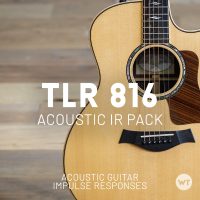
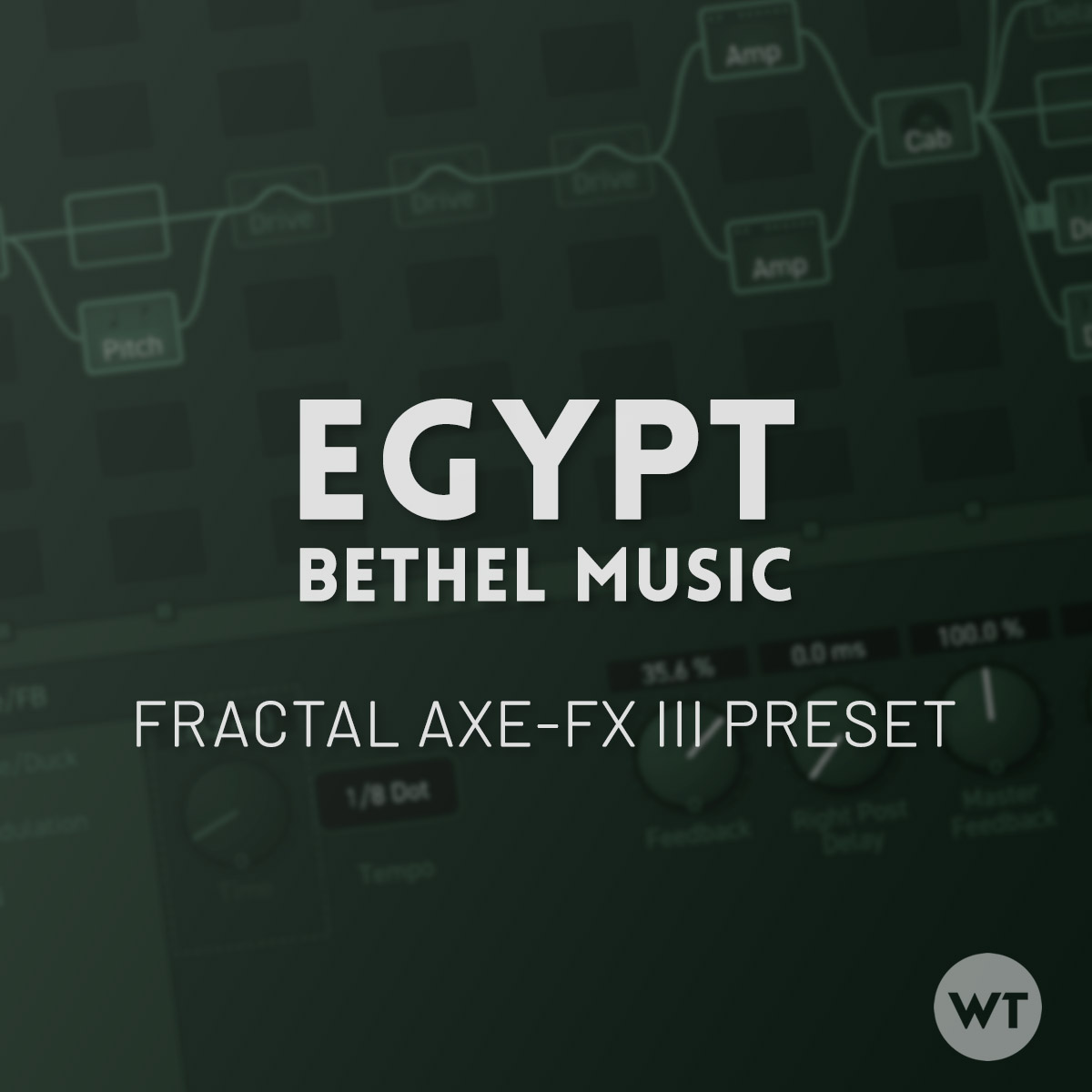
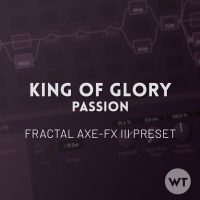
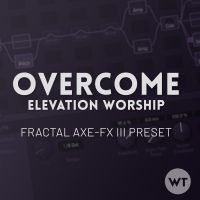
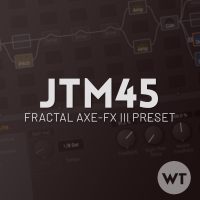
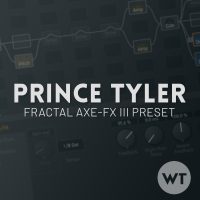

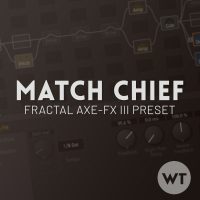
Reviews
There are no reviews yet.